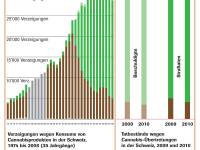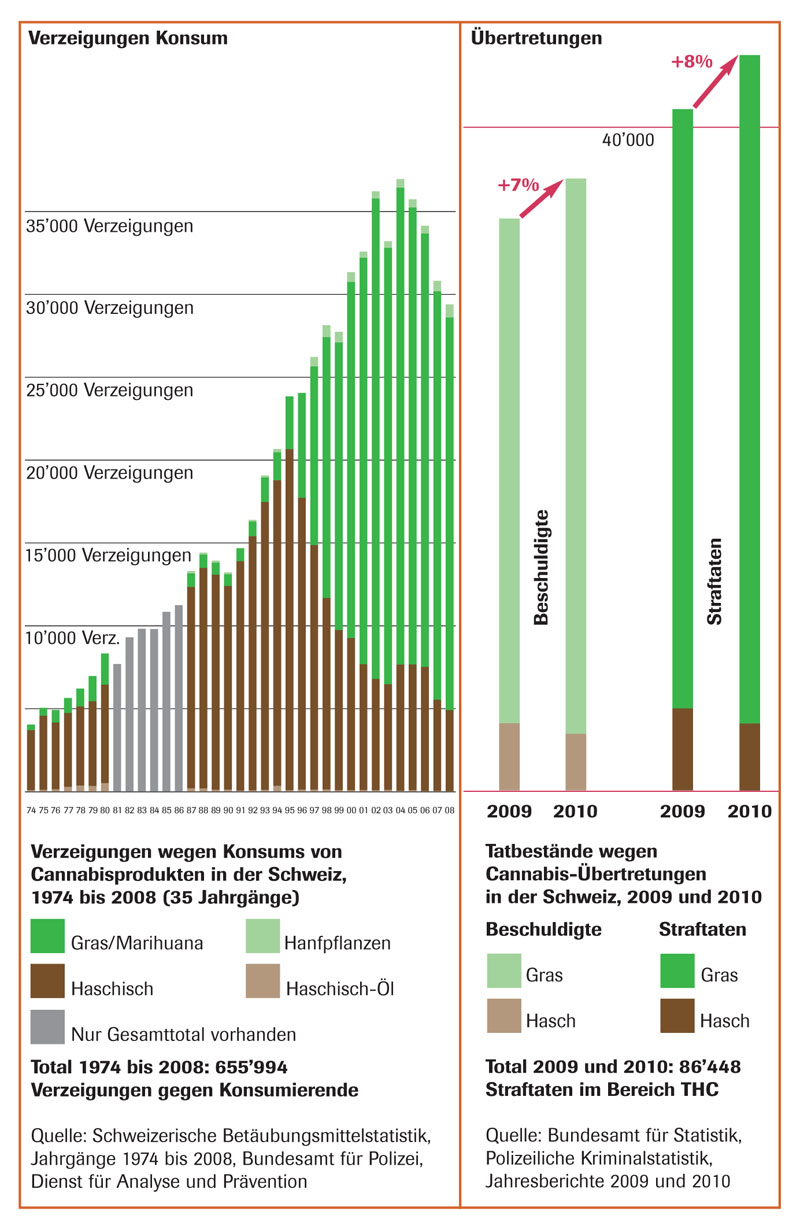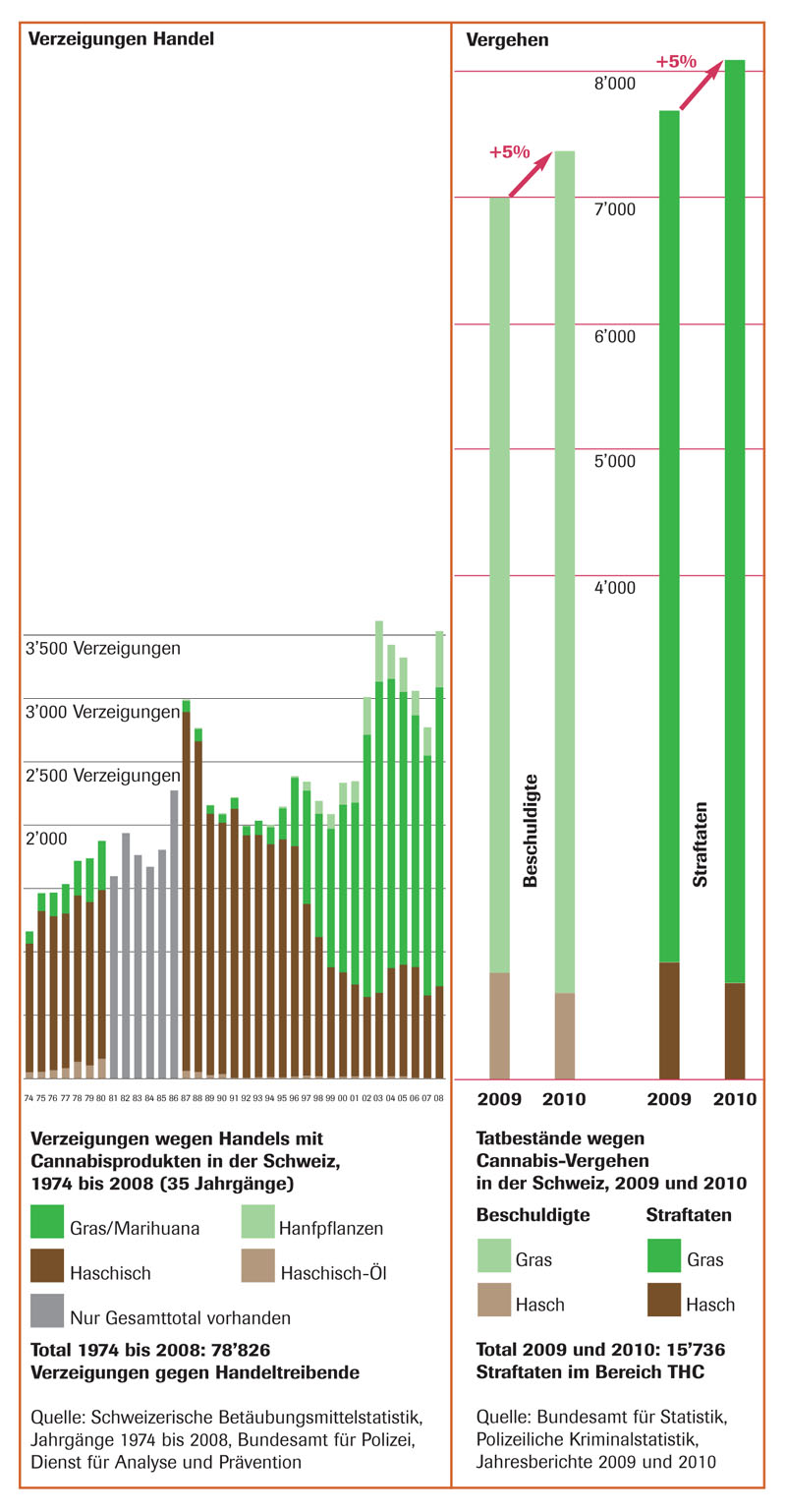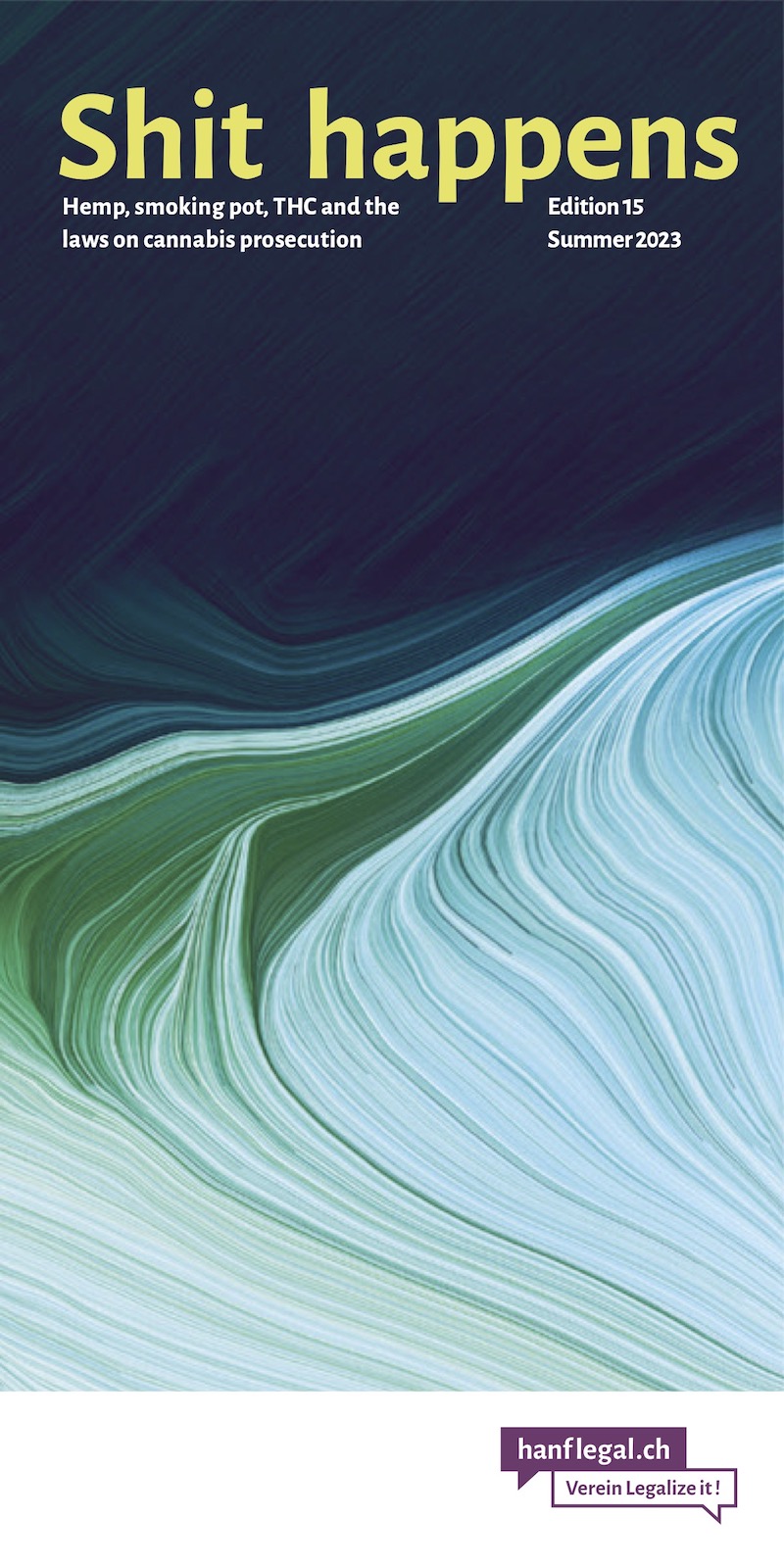- THC & Law:
2010 conviction figures: increase at a high level
After two years with the new counting method, it is clear: The extent of repression against cannabis has been clearly underestimated so far. We dare a comparison to the former counting method and can compare two new years for the first time.
New statistics from the FSO
For two years now, the Federal Statistical Office has been publishing the figures on cannabis repression. The first 35 years were compiled by the Federal Office of Police. Unfortunately, the counting method is no longer the same, so that the comparability is only limited.
However, the new distinction between contravention and report makes more sense - the former is punished with a fine and fees (total of a few hundred francs), while the latter is additionally punished with monetary penalty/day sentences or imprisonment as well as an entry in the criminal record.
Problems of the new statistics
There are now very many categories (cannabis, hemp (young plant), hemp (plant dried), hemp (plant fresh), hashish, marijuana, hashish oil and hemp seeds). But most of them are practically “empty”: that is, the two categories hashish and marijuana contain the lion's share. Therefore, we decided to append the other categories to these two. So weed means for us: cannabis, hemp (young plant), hemp (plant dried), hemp (plant fresh), marijuana and hemp seeds. Hash for us includes: hashish and hashish oil. (For details see Legalize it! 52.)
Open question
However, there is also a category “Multiple substances”. Here are probably also various pure hemp cases recorded (for example, someone who was caught with hemp seeds and marijuana). Despite repeated inquiries, the FSO did not feel able to break down this category, which is quite well filled, for us. Therefore, it may well be that each bar in the violations would be a few thousand cases higher than we present it.
Fixed penalties
The fixed penalties, which play a role especially in St. Gallen and Neuchâtel, should also not be included in these figures and probably account for another few hundred cases per year.
Comparison with previous
In the past, referrals were counted, but now accused persons and criminal offenses are counted. In principle, there should be fewer defendants than referrals, while there should tend to be more offenses than referrals. We now compare the old 35 years with the two new ones.
In the case of the consumption referrals/transgressions (first chart), the new figures are still within the range of a somewhat comprehensible deviation, but in the case of the trade referrals/misdemeanor, enormously more cases are shown than before. The reason for this is not clear. But it is clear that the extent of repression has been significantly underestimated. In 2010, it affected over 35,000 people in the case of violations and over 7,000 people in the case of misdemeanor. In one year. That is enormous.
Comparison 2009 to 2010
But even if we only compare the two new years (which are directly comparable), we see increases of 7-8% in the number of violations and of around 5% at misdemeanor. We can be curious to see how this will develop over the next few years. In any case, repression continues to rage with full force.
Perhaps the oh-so-overworked police - who in Zurich even staged a small bus strike to point out their precarious overload - should think about whether they shouldn't at least spare themselves the registration of the more than 40,000 crimes in the area of THC-contravention? These prosecutions are reprehensible anyway - there are no victims to protect - so less (repression) would clearly be more (decency).
Support our work with a donation:
Bank transfer
Account number (IBAN):
CH02 0900 0000 8709 1354 3
Full account details
Or scan this QR code with your eBanking App (ZKB, Revolut, Postfinance, …):

Or open/share the QR code as PDF file with your eBanking App.
Credit card
Donate via credit card
Verein Legalize it!
Quellenstrasse 25
8005 Zürich
Threema ID 7NH65RBY
Don’t miss anything! Follow us on social media:



